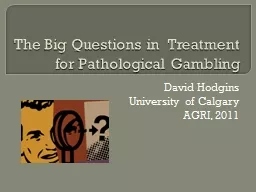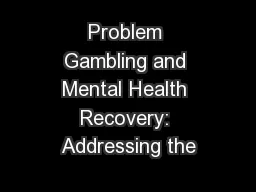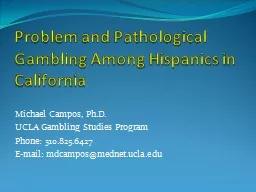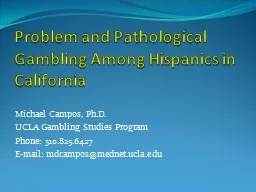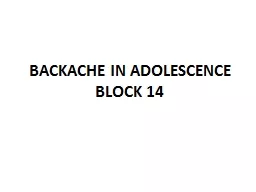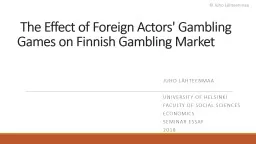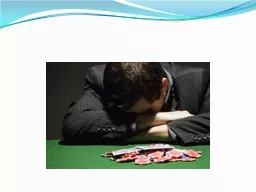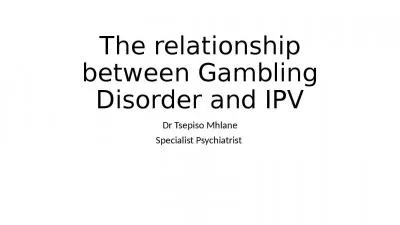PPT-The Big Questions in Treatment for Pathological Gambling
Author : karlyn-bohler | Published Date : 2016-07-25
David Hodgins University of Calgary AGRI 2011 Typical Treatment Research Progression Effectiveness TrialsMechanismsSystems Does this work in the real world Real
Presentation Embed Code
Download Presentation
Download Presentation The PPT/PDF document "The Big Questions in Treatment for Path..." is the property of its rightful owner. Permission is granted to download and print the materials on this website for personal, non-commercial use only, and to display it on your personal computer provided you do not modify the materials and that you retain all copyright notices contained in the materials. By downloading content from our website, you accept the terms of this agreement.
The Big Questions in Treatment for Pathological Gambling: Transcript
Download Rules Of Document
"The Big Questions in Treatment for Pathological Gambling"The content belongs to its owner. You may download and print it for personal use, without modification, and keep all copyright notices. By downloading, you agree to these terms.
Related Documents

